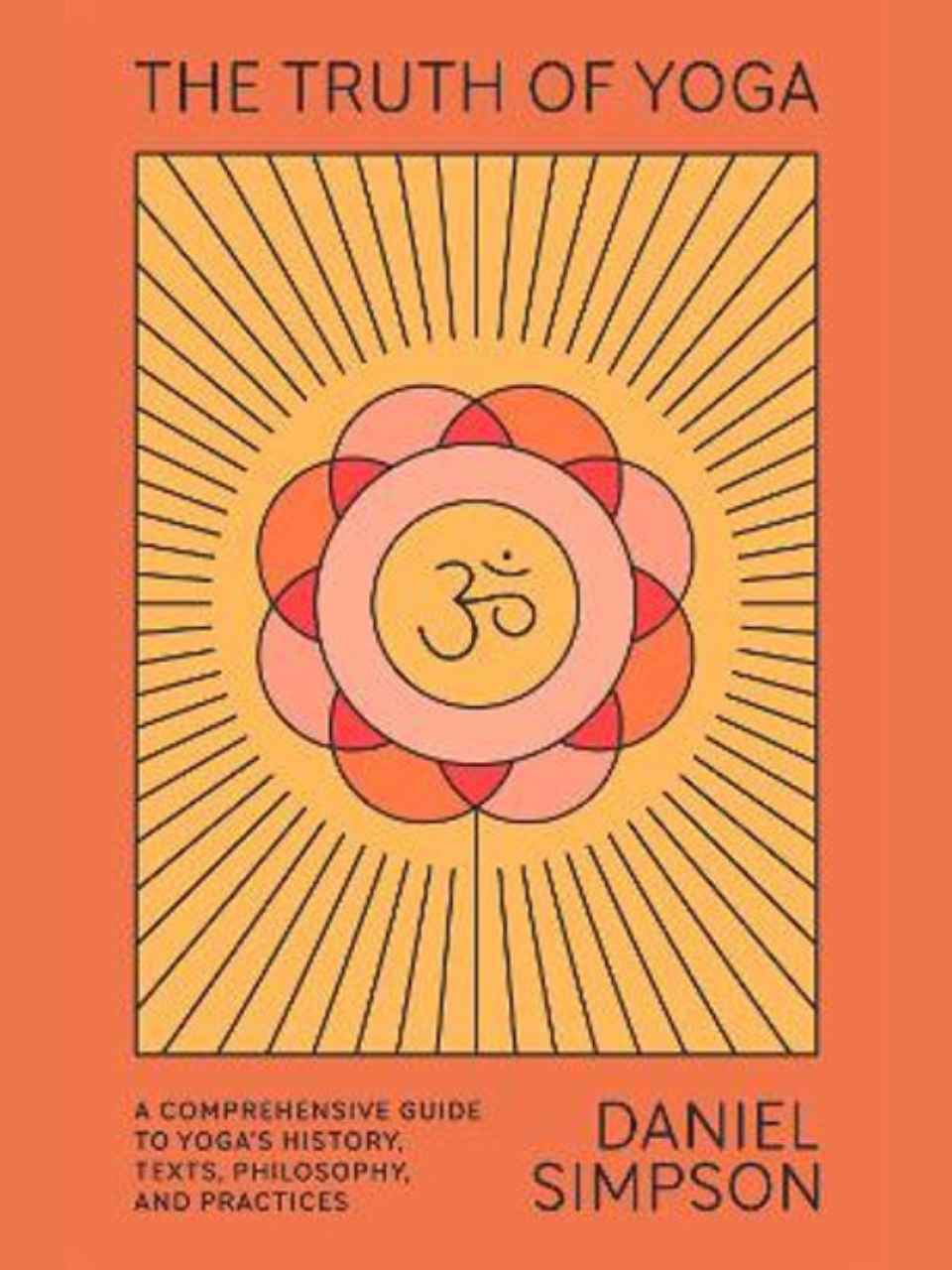Book Review: The Truth of Yoga by Daniel Simpson
Introduction
Daniel Simpson’s The Truth of Yoga is an insightful and accessible exploration of yoga’s history, philosophy, and development. Unlike books that focus solely on asana practice, Simpson delves deep into the origins of yoga, challenging common misconceptions while providing a well-researched perspective on its evolution. His approach, blending academic rigor with engaging prose, makes this book a valuable resource for yoga practitioners, teachers, and anyone interested in the philosophical and historical roots of yoga.
With a background in academia and a teaching role at the Oxford Centre for Hindu Studies, Simpson brings a wealth of knowledge to this book, offering a clear and concise guide to the many facets of yoga.
Summary
The book is structured into nearly one hundred short essays, each addressing different aspects of yoga’s history, philosophy, and modern interpretation. Some of the key themes explored include:
The Origins of Yoga – Examining early mentions of yoga in the Vedas, Upanishads, and the Mahabharata.
Yoga Philosophy – A discussion of key texts, including the Yoga Sutra of Patanjali and the Bhagavad Gita.
The Evolution of Yoga – How yoga has changed over centuries, from classical teachings to modern interpretations.
Common Misconceptions – Debunking popular myths, such as the belief that yoga is strictly about union or that it is 5,000 years old.
Modern Yoga Practices – Exploring how yoga has adapted in the West and how it continues to evolve today.
One of the standout aspects of The Truth of Yoga is Simpson’s ability to distill complex ideas into concise, digestible explanations. His writing is fluid and engaging, making it easy to absorb even when discussing intricate philosophical concepts. The book’s format allows readers to either read it cover to cover or dip into specific topics of interest, making it a versatile reference.
Analysis and Evaluation
Strengths:
Engaging and Accessible Writing – Simpson presents deep academic research in an easy-to-read format, avoiding overly dense or complicated language.
Thorough and Well-Researched – The book reflects the latest scholarship, making it a credible source for yoga teachers and serious students.
Debunks Myths – Simpson does a great job of clarifying misconceptions about yoga’s history and meaning, helping readers develop a more accurate understanding.
Flexible Reading Format – The essay-style structure makes it ideal for both cover-to-cover reading and topic-specific exploration.
Covers a Wide Range of Topics – From early texts to modern yoga trends, the book offers a comprehensive overview of yoga’s multifaceted nature.
Weaknesses:
Not for Absolute Beginners – While some lists recommend it for beginners, the depth of historical and philosophical content may be overwhelming for those completely new to yoga.
Limited Focus on Asana Practice – Readers looking for detailed physical practice guidance may not find this book as relevant, as its focus is primarily on history and philosophy.
Personal Reflection
I am currently reading The Truth of Yoga, and it has already provided me with a much deeper understanding of yoga’s roots. I appreciate how Simpson presents both historical context and modern interpretations, making it relevant for contemporary practitioners. His explanation of the Bhagavad Gita has been my favorite part so far, as it brought new clarity to a text that can often feel abstract or complex.
I agree with the author’s suggestion that this book is best approached as a reference rather than a linear read. Given its depth, I have found it most beneficial to explore topics that interest me the most rather than trying to absorb everything at once.
Conclusion
The Truth of Yoga is an excellent resource for anyone looking to deepen their understanding of yoga beyond the physical postures. Simpson provides a well-researched, engaging, and accessible look into yoga’s history, philosophy, and modern evolution. While it may be too detailed for absolute beginners, those with some background in yoga will find it an invaluable addition to their reading list.
Whether you are a yoga teacher, a serious student, or someone interested in the broader aspects of yoga philosophy, this book offers a treasure trove of knowledge. It’s a must-read for anyone curious about the true nature of yoga and how it has been shaped over time.
